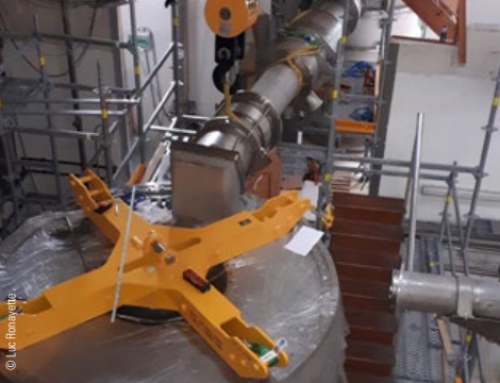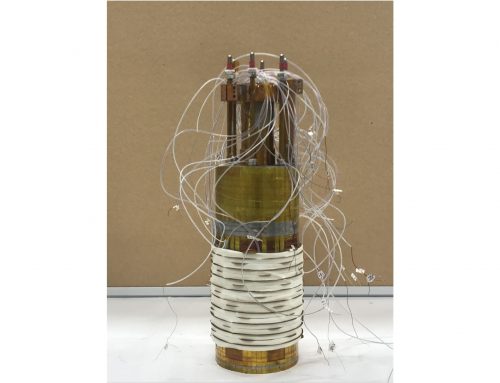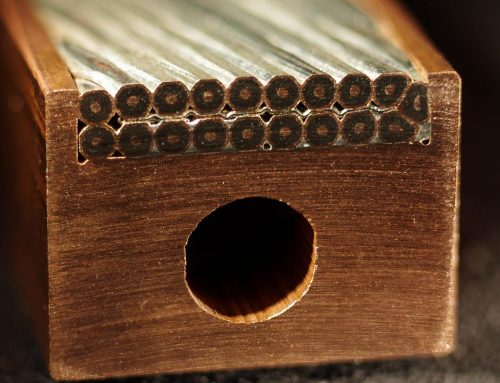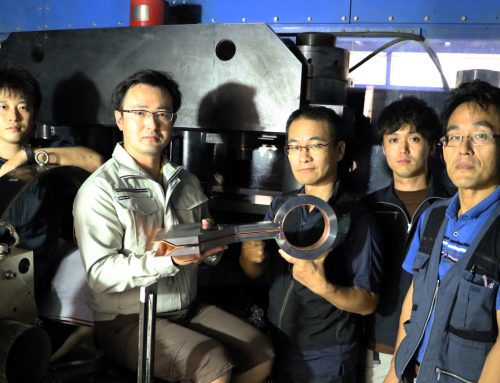Jérôme Béard, LNCMI Toulouse.
We have designed a novel pulsed magnetic dipole, called foil coil, which can deliver a transverse magnetic field of more than 10 T along a 0.85 m optical access operating without cryogenic equipment. This magnet is dedicated to linear magnetic birefringence measurements in the framework of the Biréfringence Magnétique du Vide (BMV) apparatus installed at LNCMI-Toulouse. The magnet is based on the winding of a 500 µm thick and 72 mm wide copper foil insulated with two layers of Kapton tape as shown in the figure. We wound about 100 meters of copper foil over a glass fiber/epoxy body with a racetrack shape, representing 50 layers of conductor. The 17 mm diameter optical access is provided by two holes in each turn in the insulated copper. Generating 10 T in about 6 ms allows us to operate the magnet at room temperature. This is the major difference to other pulsed magnets usually cooled in liquid nitrogen. Avoiding the need for a nitrogen cryostat, thus, the thermal insulation between the coil and the vacuum tube of the experiment permits to use the full access diameter of the magnet. This design offers a very good symmetry of the generated magnetic field thanks to the homogeneous current distribution and the very small effect of the layer transition compared to a wire wound coil. Once connected to one of the 3 MJ mobile banks of LNCMI, tests have been made up to 12.5 T. During scientific measurements, the maximum field is fixed to 11 T, providing a reasonable safety margin. The maximum field achievable by this magnet is limited by the buckling of the foil, mainly influenced by small faults in the winding, and is, therefore, hard to predict by a simulation. We have proceeded to commission the magnet in the BMV apparatus. Some potential improvement in the design can be made to increase the efficiency or the ergonomics. First, an extra cooling to remove the heat from the magnet box can be installed. The repetition rate will be important to perform an experiment where hundreds of pulses will be necessary. Our first prototype does not have an optimized cooling because the main objective was to generate at least 10 T over about 0.8 m at room temperature and in air. Actual cooling is due to natural convection and can be increased with a forced flow of air inside the box containing the magnet. A second modification is to optimize the pulse duration, probably by shortening it, either by adapting the actual capacitor bank or using another one available at LNCMI, without lowering the maximum field. A next step could be a modification in the design itself. For example, it is possible to cut the copper foil to concentrate the current density closer to the laser beam path, increasing the efficiency of the coil. We have taken preliminary scientific data in vacuum during commissioning and first results look encouraging. We installed the new magnet successfully and the absence of a cryostat simplifies the whole apparatus. The BMV team is currently working to optimize optics and to diminish the overall noise by acoustically insulating the apparatus from the coil before pushing the magnetic field to its maximum.
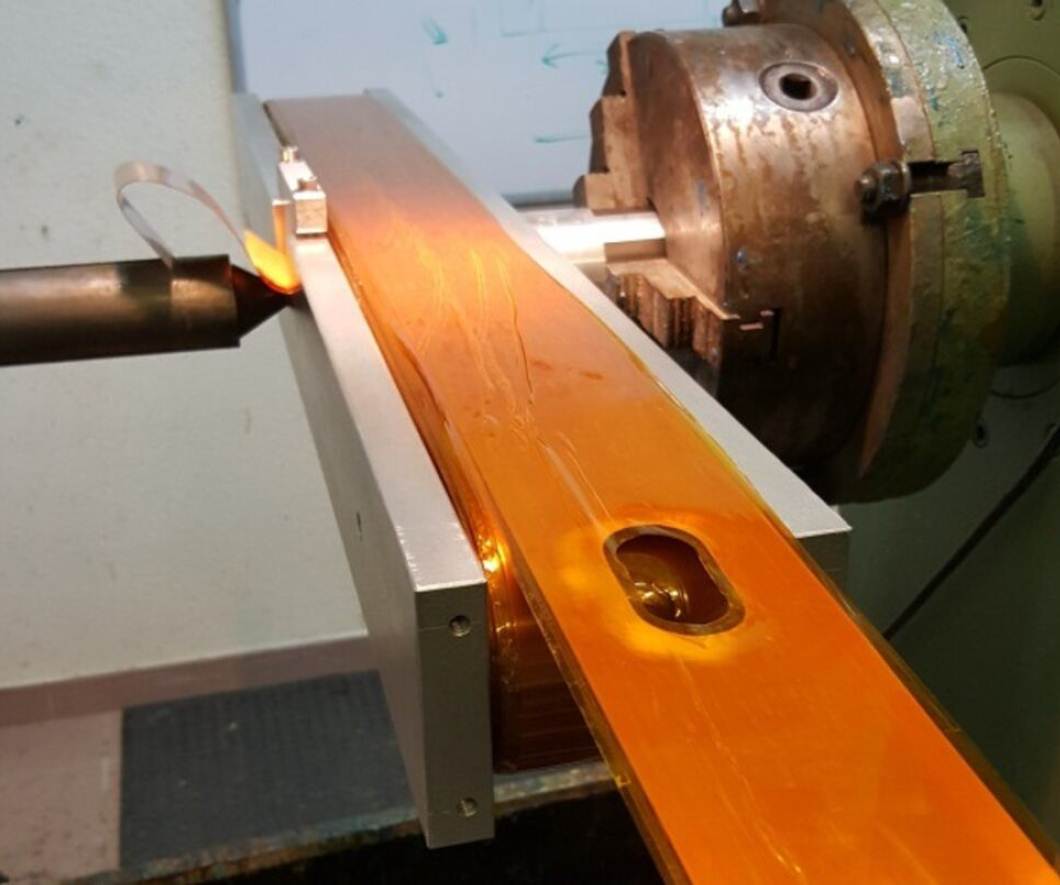
Photo: ©Jérôme Béard
Figure: Photo of the foil coil during the winding showing one hole
in the copper foil and in the Kapton tape. The holes have a racetrack shape to keep a circular access when the foil is wound over
the cylindrical end of the magnet.
A novel pulsed magnet for magnetic linear birefringence measurements, J. Béard, J. Agil, R. Battesti, and C. Rizzo, Rev. Sci. Instrum. 92, 104710 (2021).
https://aip.scitation.org/doi/full/10.1063/5.0064111
Contact: jerome.beard@lncmi.cnrs.fr



